William Medina has been delivering food for DoorDash and Uber Eats in Queens since 2019, when he moved to New York from Bogotá, Colombia. He’s risked his health picking up and delivering food to customers during the pandemic and pedaling through snow, hail, and thunderstorms. He deals with the daily hazards of navigating around New York City traffic, and his motorcycle has even been stolen.
Lately, though, times have been especially tough; he hasn’t been able to send much to his family in Colombia. For the past year, he’s been struggling to keep up with his rent and pay for groceries—despite the fact that his hourly pay has never been higher. In December, his minimum hourly wage went up to $17.96, then it increased again to $19.56 in April. But new policies enacted by delivery apps in response to the higher pay keep him from working enough to generate sufficient income.
New York’s City Council mandated the pay hike for the city’s 65,000 delivery workers last June, marking a significant increase from the $5.39-an-hour average that had been the norm, according to the city’s Department of Consumer and Workplace Protection (DCWP). The law faced stiff resistance from delivery companies, including Uber Eats, DoorDash, and Grubhub, which have all been struggling to be profitable. (Of the three, only Uber reported a profit in 2023.) They filed a suit after the law passed, delaying its implementation until December. (Uber and Grubhub did not respond to requests for comment; DoorDash answered questions via a spokesperson.)

Road Warrior: On this day in June—six months after a new pay rate kicked in for the city’s delivery workers—Medina starts his Uber Eats shift in Queens at 4 p.m.

On Call: Medina helped win that victory. As a lead organizer with labor group Los Deliveristas Unidos, he lobbied city officials to increase pay for delivery workers.
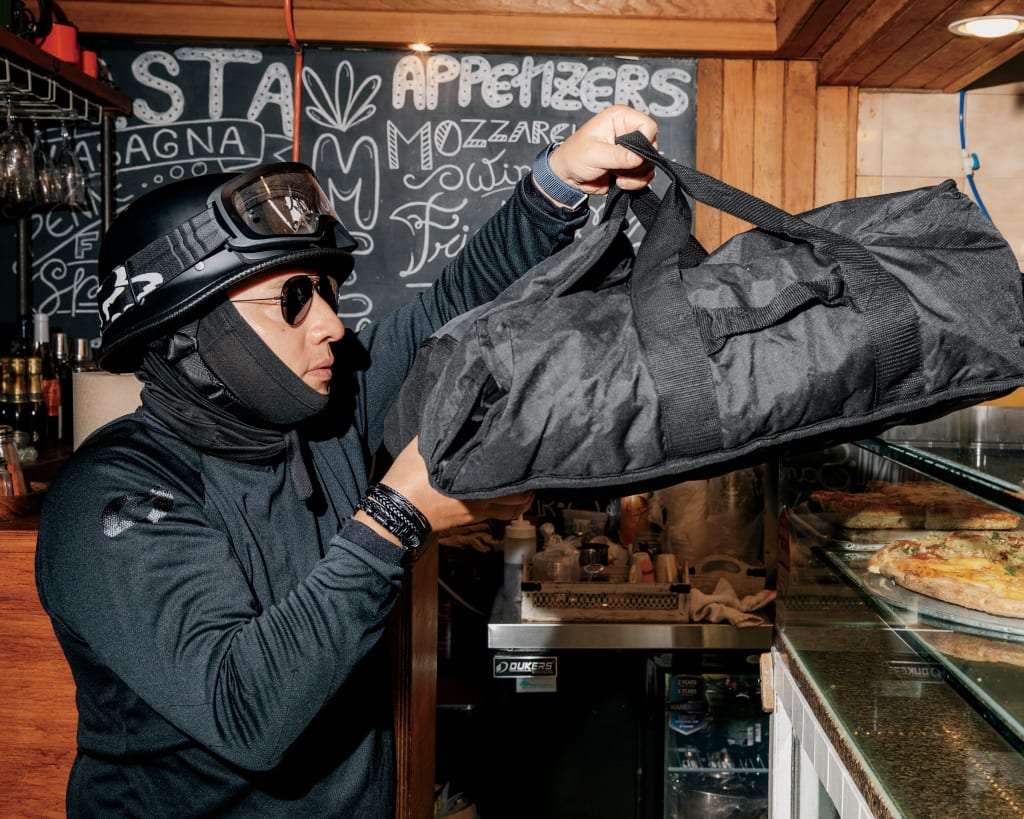
Pickup Game: Medina has to transport certain orders more carefully than others, which can slow him down. He’s paid for the full delivery time, but has to balance care with efficiency.
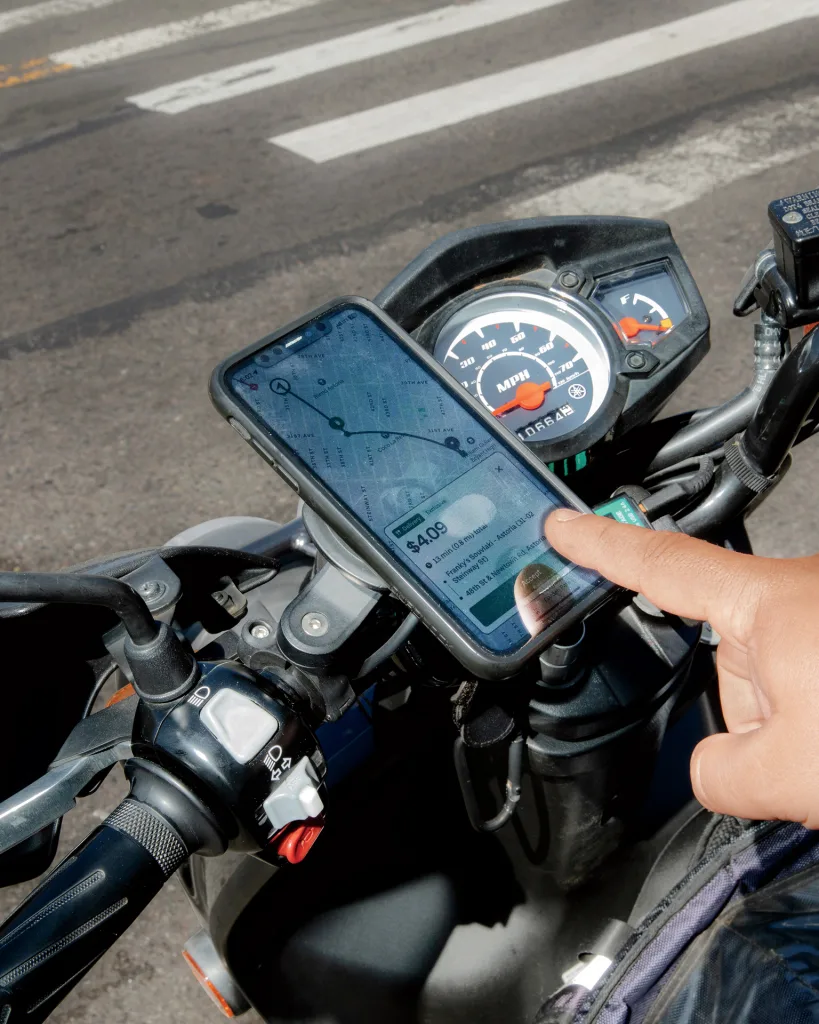
Price of Convenience: When orders come in, drivers see the approximate time it’ll take to complete the delivery and what they’ll earn. This order is worth $4.09.

On the Hunt: While he waits for an order to be packed up, Medina scans his app for any nearby offers.
On paper, the pay raise looks substantial. A DCWP survey in February found that two months after the law took effect, delivery companies paid app workers $16.3 million more per week—up 165% from the prior year’s weekly average. But the new minimum wage hasn’t translated to an improved economic position for all workers. Although drivers are now paid more for an hour of work, the delivery apps have made it difficult for them to log in and work as much as they used to, an apparent effort to trim labor costs. Some apps also now deemphasize tipping for customers in New York City as a way to soften the blow of fees being tacked onto orders to cover the wage hike.
The law’s bumpy rollout underscores something the higher wage was meant to mitigate—the extent to which, as Medina puts it, delivery workers are “always at the whim of these companies. It’s tough, psychologically, to work for them. They can change how much you are paid or your hours at any time.”
Advocates now say these workers need further measures that build on the law, such as ensuring a weekly minimum number of hours of work. “Companies will always find ways to cut costs by exploiting delivery workers,” Montero says. “We’re still fighting for protections so they can make a living wage.”
New York City’s minimum pay law tackles an issue central to delivery drivers: how their work is measured and compensated. Until this past winter, Uber, DoorDash, and Grubhub paid food delivery workers in the city a flat fee per delivery, regardless of how long it took them to pick up the items and travel to customers’ homes.
Under the new law, they’re paid the hourly minimum for all their “active time,” which starts when they agree to pick up an order and ends when they drop it off. Medina says getting paid an hourly wage rather than a fee per delivery has led the apps to schedule his time more efficiently, so he has less downtime between jobs. Drivers are now also paid for previously uncompensated downtime—dubbed “on-call” time—but because of the arcane way it’s calculated, this pay can vary widely from week to week.
With higher wages, Medina would easily be making more money—if he were working as much as he did before the law took effect. Since December, delivery apps have been trimming labor costs by limiting the number of drivers who can work at any one time, which has meant fewer hours for Medina and his colleagues.
In years past, Medina worked 12- to 14-hour days, signing in to the app and delivering whenever he was available. He rarely encountered blocks of time that were unavailable or “gated.” Now he sees them frequently and has to reserve his hours a week in advance, competing with thousands of other drivers for a dwindling number of slots. As a result, Medina says he is only able to work a couple of hours a day, in the evenings or on weekends.
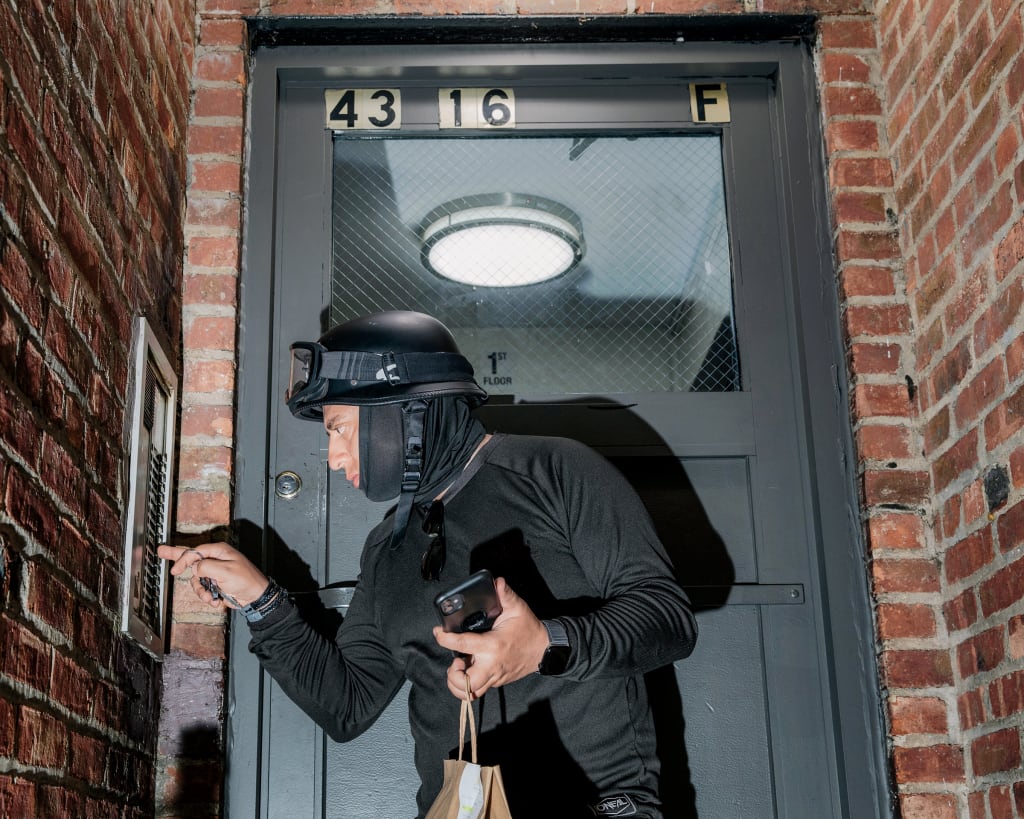
Buzzer Beater: With the new law in effect, Medina and others have found their shifts shortened, which means they need to maximize their deliveries while on duty.
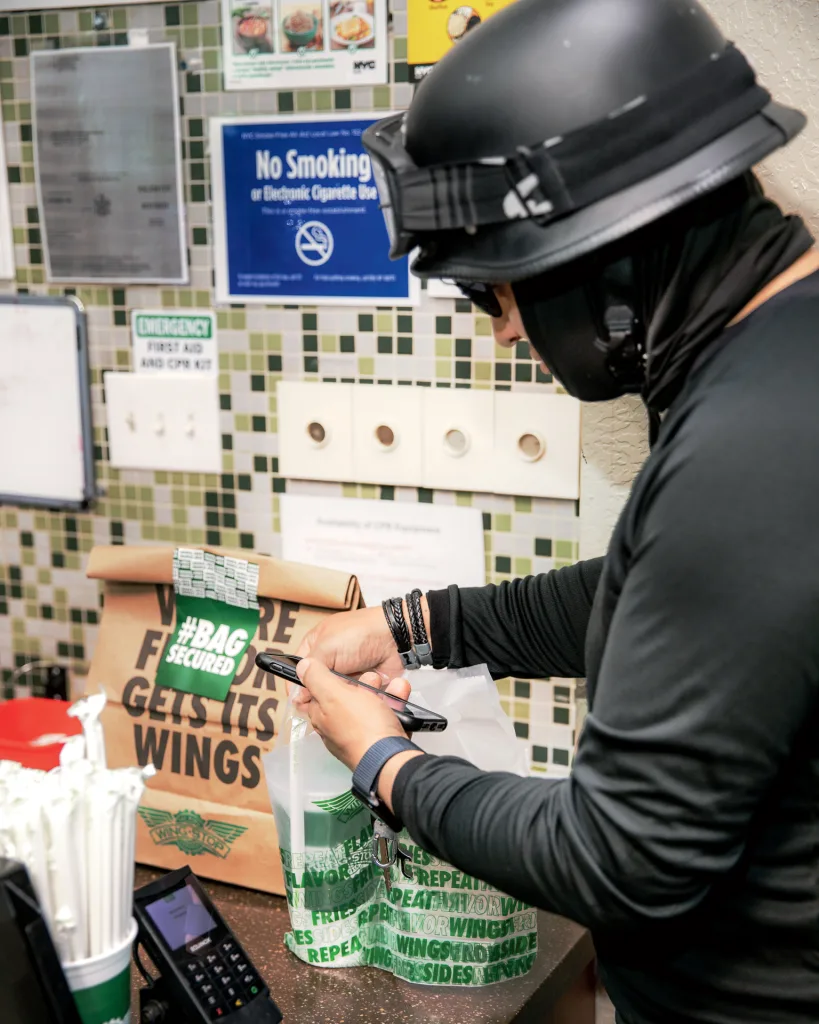
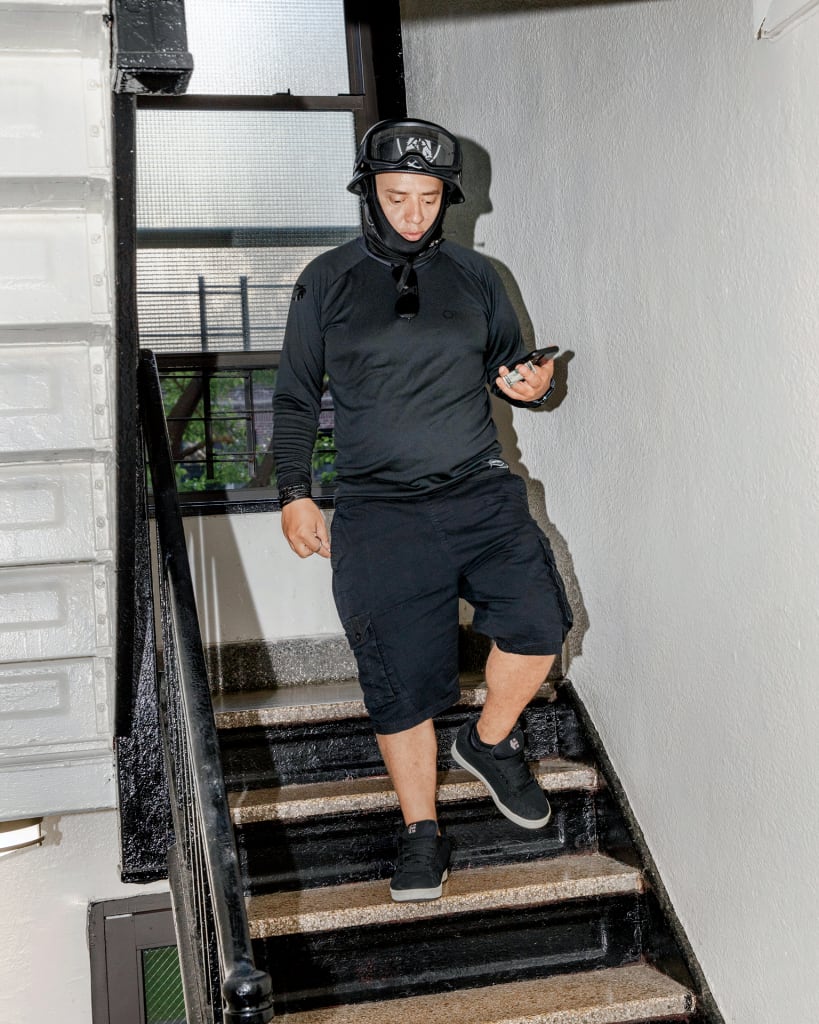
Walk-Up Call: On Uber Eats, the tipping option doesn’t appear until after an order is delivered. When Medina climbs up to an apartment, there’s no promise of a tip.

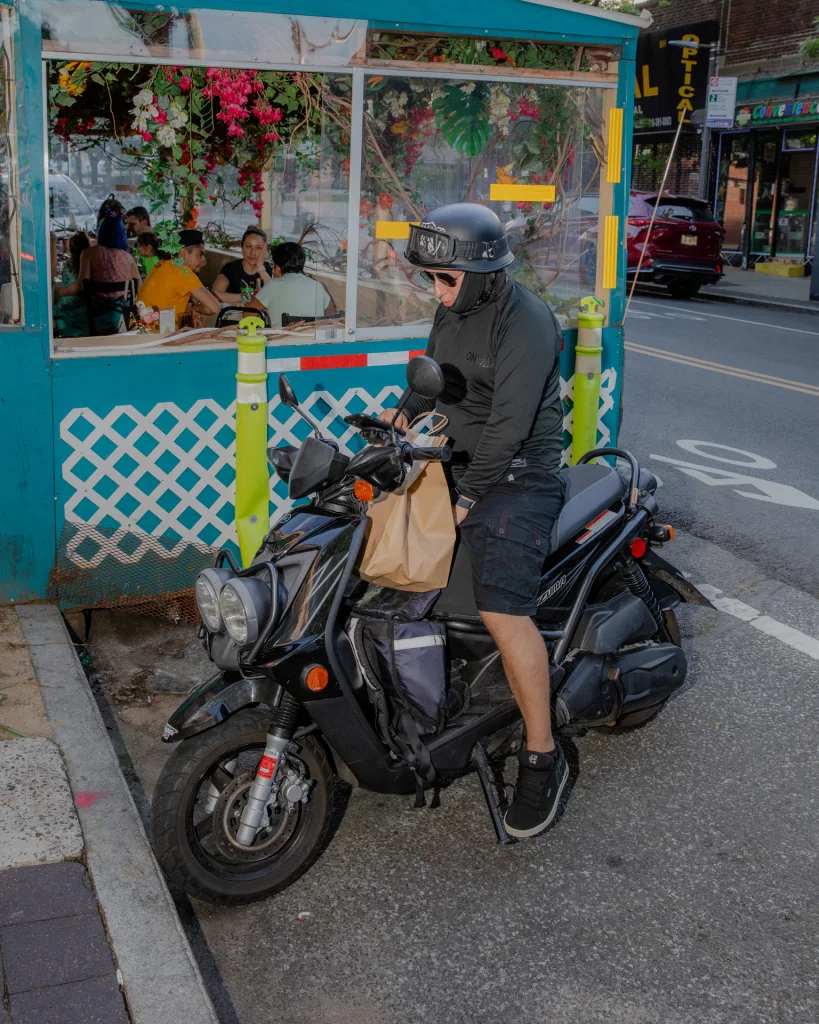
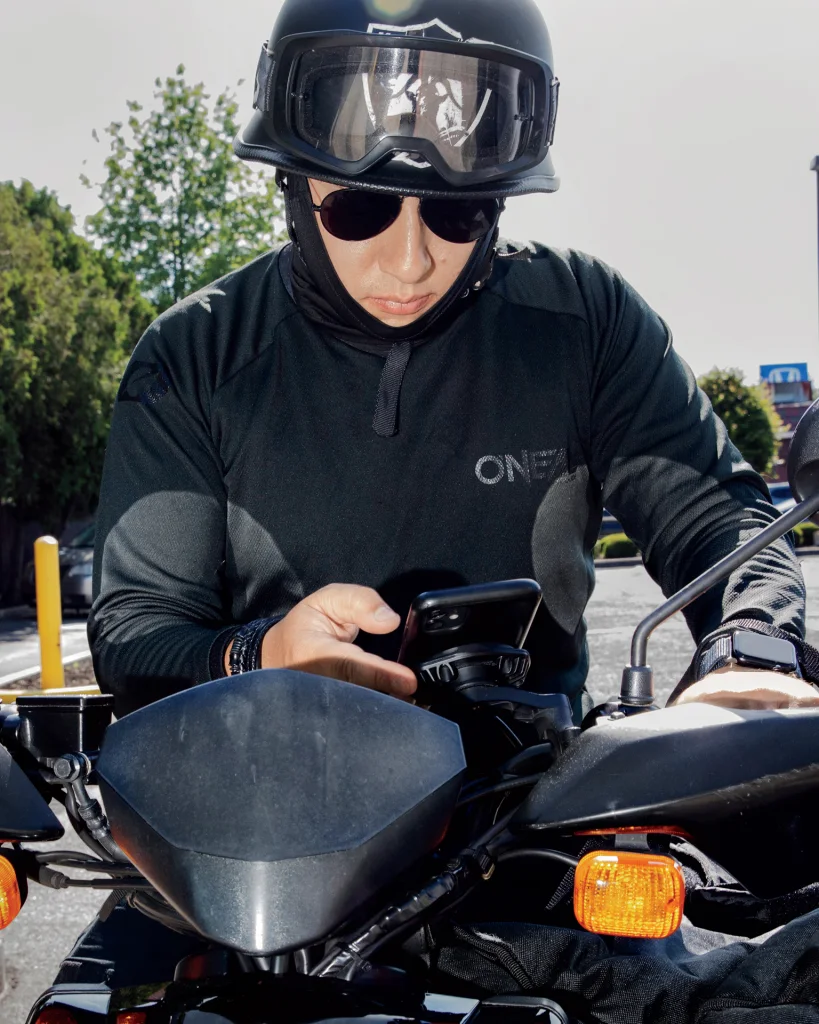
Time Is Money: Before December 2023, delivery workers earned a flat fee per order. They’re now paid based on the time spent picking up and delivering orders.
Fellow New York delivery worker Sebastian Zuniga has had similar trouble booking delivery slots on the DoorDash and Uber Eats apps. “I used to be able to work 24 hours if I wanted to,” he says. “Now, a few slots open up during the week and that’s it.”
A DoorDash spokesperson characterizes the limited time slots as something New York’s city council made peace with while devising the minimum pay law. “The city acknowledged that platforms like ours would be left with no choice but to make Dashing less flexible and force us to begin restricting where and when New Yorkers can choose to Dash,” the company wrote in a blog post in March.
Even with the scheduling complications, Medina and Zuniga are relatively lucky. Some part-time drivers have been kicked off apps without explanation. Los Deliveristas Unidos said in February that roughly 40 drivers per week were reaching out to the organization for help getting reinstated, up significantly from years prior. Grubhub’s driver resource page says that it has “made adjustments to ensure that the number of available delivery offers aligns with the number of delivery partners on the roads” and notes that completing more deliveries will “see the most opportunities to earn, increased flexibility in times to deliver, more efficient trip times, and less time spent waiting for offers.” In other words, the fastest and most efficient drivers will get the most time slots.
Medina sees such moves as a reminder of the precarity of all delivery workers—even those who, like him, have spent their wages on new vehicles to better perform their jobs. “It’s upsetting to know that I could get kicked off the apps at any time without explanation even though I have invested so much in this job,” he says.
Workers have also had to adjust to a drop in tips. After the law passed, both Uber and DoorDash began adding a roughly $2 fee per order in New York City to cover their labor costs. At the same time, they redesigned their apps to downplay tipping: The prompt now appears only after a delivery is complete. “These new regulations will force us to raise fees for orders in New York City,” DoorDash wrote in a December blog post. “In order to better balance the impact of these new costs, we’re moving the option to tip in the DoorDash app to after checkout.”

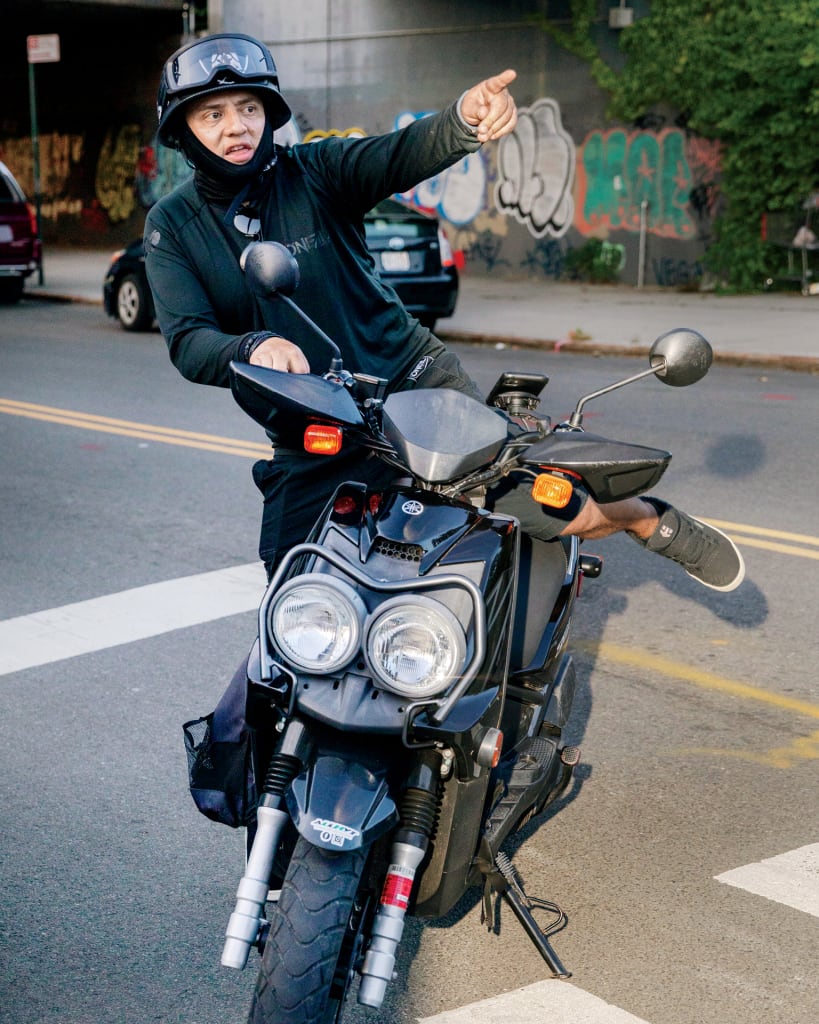
Looking Out: Between deliveries,Medina pointsa fellow motorcyclistwhosebike had brokendown to a nearbyservice station.
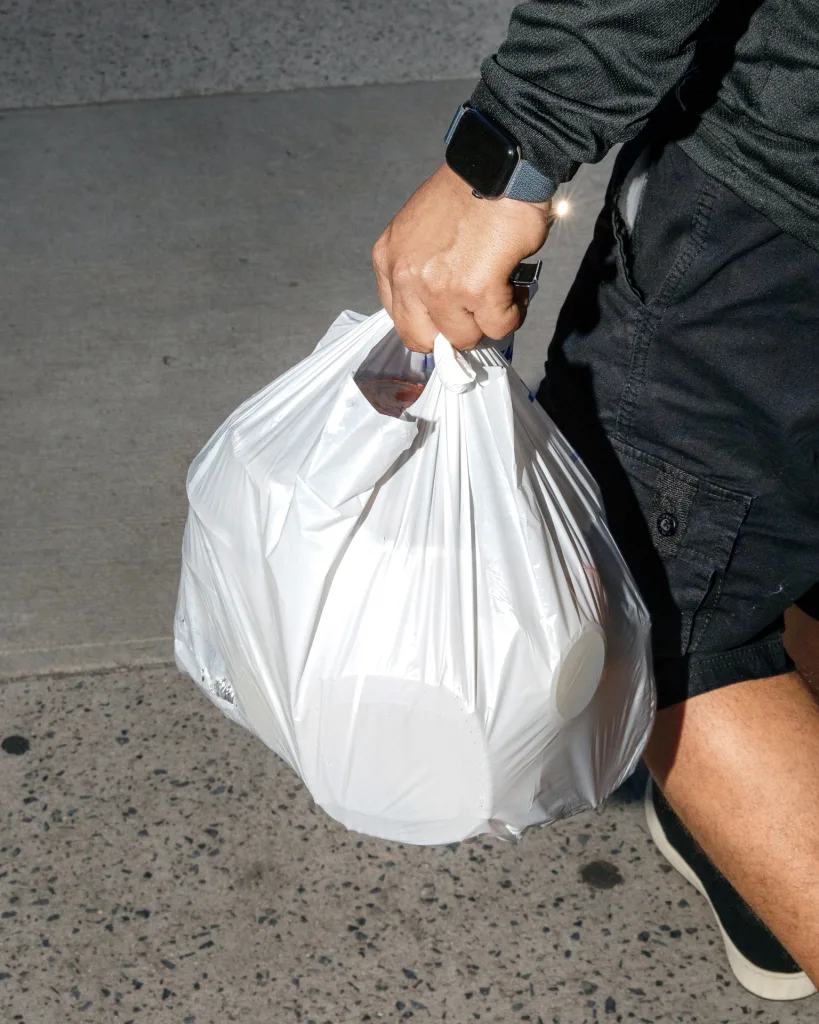
In the Bag: Medina delivers 14 orders during his four-hour shift, often accepting two at a time.
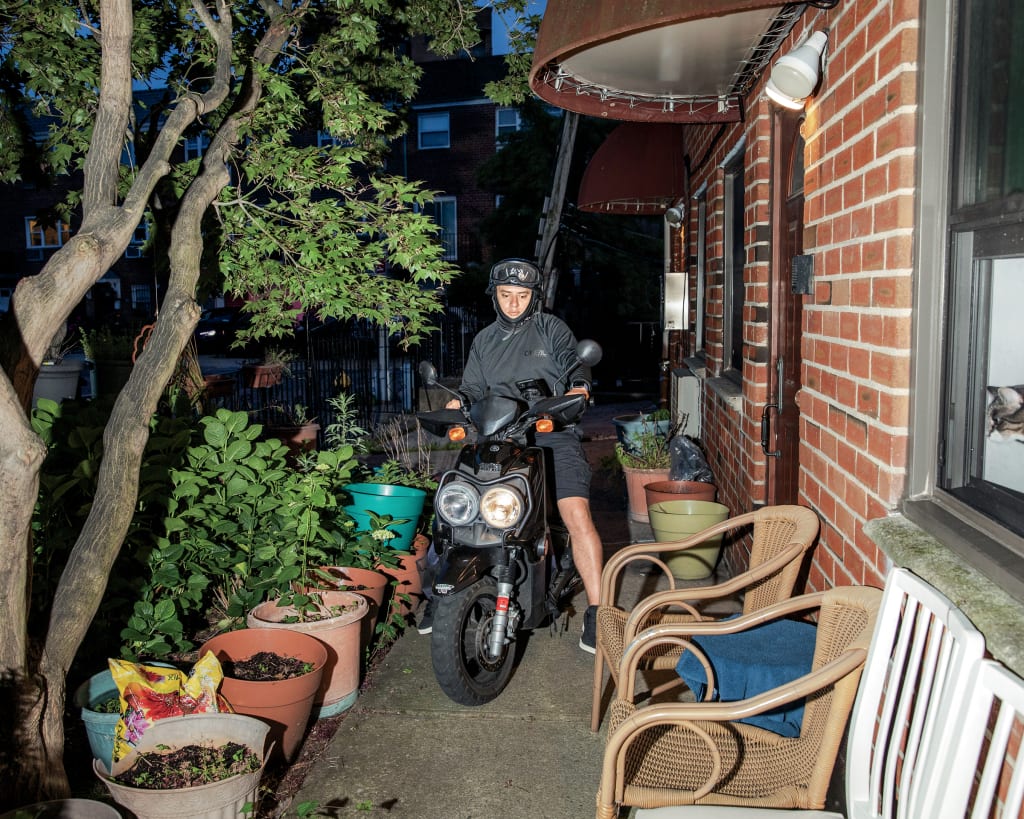
Square One: Medina returns to his apartment in Queens after his shift delivering around Astoria and Long Island City.
DCWP data shows that tips were $6.6 million lower year over year in the first two months of the new pay rate. Before that, Medina says about 90% of his earnings came from customer gratuities. Though higher hourly pay should make up for this, labor advocates say it doesn’t always work out that way.
“These companies need to be reined in,” says New York state senator Jessica Ramos, who sits on the state Senate’s consumer protection committee. In May, she introduced a bill that would require delivery apps to offer the opportunity to tip at checkout. “[Tipping] doesn’t take away from the bottom line of the company,” she says.
After observing the limited impact of the wage increase, Antonio Solis—another Los Deliveristas Unidos organizer who delivers for DoorDash and Grubhub—sees an opportunity to push for more benefits.
The momentum from the minimum-pay law can be translated into more worker protections if delivery workers keep pushing collectively. “We got a pay increase by working together,” he says. “We need to stay united to fight for our dignity.”



















